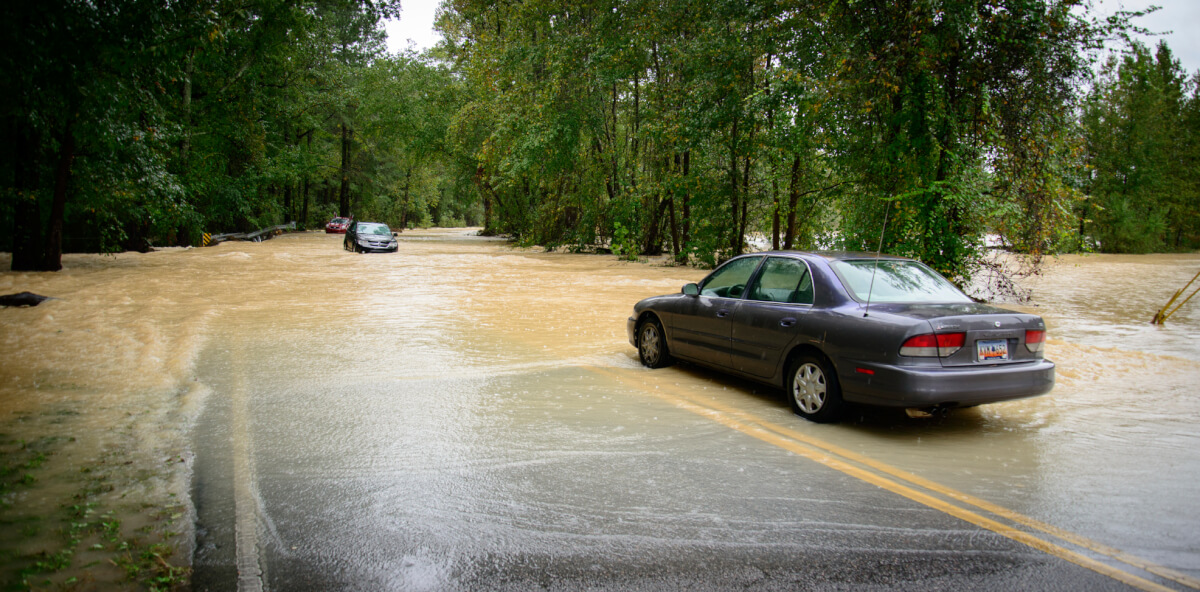For three days in August 2016, parts of Louisiana saw rains that exceeded those of Hurricane Katrina. The torrential downpours dropped more than 30 inches of rain in some regions of the state—three times that of the infamous hurricane. No one could have foreseen this. The National Weather Service said the probability of the heaviest-hit areas receiving that much rainfall was less than 0.1 percent.
Over 100,000 homes and 6,000 businesses were flooded and close to 20 percent of all Louisiana businesses were disrupted. Because many of the areas that flooded were not in high-risk areas, only one third of small businesses were insured against flood damage. In cases like this, commercial flood insurance can make the difference between reopening, or closing for good.
Flooding Can Occur Anywhere
Extreme precipitation is occurring with greater frequency across the U.S. In addition to Louisiana’s August flood, historic flooding occurred in 2016 across areas of Texas, Louisiana, Arkansas and Mississippi in the spring, and Wisconsin and neighboring states in September. In October, Hurricane Matthew devastated the southeast coast from Florida to North Carolina.
While large storms are the most notorious cause, flooding can occur anywhere, often with little or no warning. Rising river waters after heavy snow or rainfall, the breaching of dams or levees, and flash flooding caused by sudden, excessive rainfall can have devastating consequences for business owners, including damage to their buildings, loss of inventory, the need for debris removal and extensive cleanup, and business interruption.
How to Protect Your Small Business
That’s why it’s important to take advance measures to prevent or reduce the damage a flood can cause. This is especially vital if your business is in a 100-year or 500-year flood zone, which equate to rainfall events that have between a 1 percent and 0.2 percent chance of occurring, respectively. Use the Flood Map Service Center offered by the Federal Emergency Management Agency (FEMA) to check if your business location is in a flood zone.
These preventive actions can help protect your business, property and employees from the perils of a flood.
Have a Business Continuity Plan
A business continuity plan is a strategy for recovering your business in the event of a natural disaster or other emergency. An effective business continuity plan builds upon four key steps:
- Identify your risks or threats.
- Identify your critical business functions and the processes and resources required to support them. This may include things like answering the phones, running key equipment and distributing your product or service.
- Adopt controls to prevent an event or reduce its impact and severity. For example, you might keep copies of all paper and digital files in an off-site location or maintain critical equipment at a higher elevation such as the second floor of your building.
- Test and improve your plan routinely, and train your employees on their roles in executing the plan.
Purchase Flood Insurance
Most standard business insurance policies do not cover flood damage and the loss of income that can result. In other words, even if your business has a good insurance policy, a flood could wash everything away. However, you can purchase flood insurance via your insurance professional through the National Flood Insurance Program (NFIP). NFIP offers up to $500,000 of protection for your commercial building and $500,000 for contents. If you live outside a floodplain, you may be eligible for a preferred risk policy with a much lower premium than policies for higher risk areas offer.
It’s important to note that NFIP offers coverage for business property only; it does not provide protection for loss of income if your business is closed for a period of time following a flood. This can be a serious concern for small business owners who do not have large reserves set aside for unexpected downtime. If this is a concern for you, excess flood insurance may also be available for properties valued above the NFIP limits to which business interruption coverage may be added.
Prepare Your Property
Basements are vulnerable to flooding because water can flow down into them and seep through walls when the surrounding ground is saturated. If your business has a basement, these measures can help reduce the damage a flood can cause:
- Inspect your basement for evidence of water entry. Caulk any cracks on interior walls, extend downspouts and re-grade the landscape so water runs away from the building.
- Install a sump pump to protect against seeping groundwater or minor floods. A battery-powered model will operate even when the power is out.
- If water is a recurring problem, apply a waterproof sealant to foundation cracks, framing joints and the floor. For a longer-lasting remedy, you may need to install a drainage system and a waterproof membrane around the perimeter of the foundation.
- Move valuable equipment, papers and inventory to a safer location, such as a second floor or attic.
To reduce the risk of health and environment damage:
- Anchor your fuel tanks. Unanchored tanks can float away and release fuel during a flood.
- Install sewer backflow valves to prevent sewage from backing up into your building.
- If your business uses well water, a licensed well drilling contractor can advise on ways to protect the well from contamination.
Flooding is a common challenge many businesses face. By taking proactive measures and insuring your business against the risk of flood, you can minimize potential damage a flood can cause — and help ensure that your business prevails.





